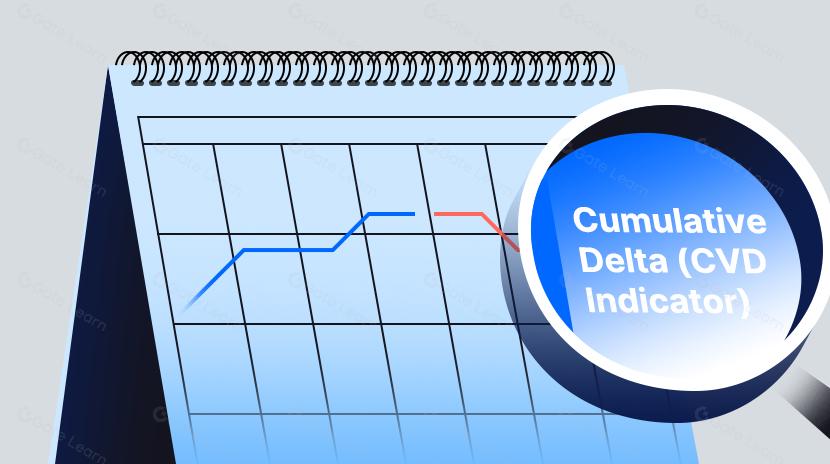Как изменится рынок криптовалют с внедрением фреймворка MiCA? Повлияет ли это на токенизацию RWA?
Поскольку криптовалюты, такие как Биткойн и Эфириум, становятся частью массовой культуры, правительства по всему миру исследуют способы поощрения инноваций, минимизируя инвестиционные риски. Европейский союз лидирует в этом движении, вводя унифицированное регулирование под названием MiCA (Рынки криптовалют). Его целью является предоставление четкого правилника для всей европейской криптоиндустрии с целью защиты инвесторов и поддержания стабильности финансовых рынков. После обширных обсуждений и переговоров Европарламент одобрил законодательство MiCA в апреле 2023 года.
Однако, хотя MiCA регулирует выпуск, торговлю и операции крипто-ориентированными активами (например, с жесткими требованиями к раскрытию информации, капиталу и контролю за рисками в отношении стейблкоинов и утилити-токенов), ее прямое влияние на токенизацию активов реального мира (RWAs) остается ограниченным. В следующих разделах мы рассмотрим, что представляет собой MiCA и что это означает для более широкой крипто-экосистемы.
MiCA: Смелый шаг ЕС по регулированию криптовалютного финансирования
MiCA является частью пакета цифровых финансов ЕС, наряду с Законом о цифровой операционной устойчивости (DORA) и пилотным режимом DLT (технология распределенного реестра). Вместе они формируют основу подхода ЕС к развитию своей криптофинансовой экосистемы. В отличие от отдельных стран, которые должны устанавливать свои собственные правила, MiCA, будучи «регулированием», имеет прямую юридическую силу во всех государствах-членах ЕС, позволяя работать криптовалютному рынку в рамках ЕС в рамках единой правовой базы.
Другими словами, основная цель MiCA - гармонизация регулятивных стандартов и предоставление четких юридических определений, особенно для криптовалют, которые еще не покрыты действующими финансовыми законами. В соответствии с MiCA все деятельности, связанные с выпуском и торговлей криптовалютами, должны обеспечивать прозрачность, получать соответствующее разрешение и подвергаться надзору. Это направлено на предотвращение манипулирования рынком и помощь инвесторам полностью понимать риски. В заключение, MiCA стремится способствовать инновациям в области блокчейна, предлагая инвесторам безопасную, прозрачную и стабильную рыночную среду.
Объем и основное регуляторное содержание
MiCA в первую очередь ориентирована на две группы: 1) Компании, выпускающие криптовалютные активы, и 2) Субъекты, предоставляющие крипто-связанные услуги (такие как биржи и провайдеры кошельков). Согласно MiCA, «криптовалютный актив» определяется как любой цифровой актив, который хранит или передает стоимость или права с использованием блокчейн или подобных технологий. MiCA широко классифицирует эти активы на три категории:
- Токены электронных денег (EMT): Это стабильные токены, привязанные к фиатным валютам и используемые в основном для платежей. Общие примеры включаютUSDC, Tether (USDT) и Paxos Standard (PAX).
- Токены, обеспеченные активами (ARTs): Эти токены получают свою стоимость от корзины активов, таких как несколько фиатных валют, товаров или других криптоактивов. Оригинальный проект Libra Facebook (позже переименованныйДием) попадает в эту категорию.
- Другие Крипто Активы: В эту категорию входит все остальное, например, Биткоин, Эфириум и различные утилитарные токены.
Длястейблкоины, MiCA introduces stringent rules: Issuers must maintain sufficient reserves and comply with robust capital, governance, and risk management standards. To prevent stablecoins from becoming speculative instruments, MiCA explicitly prohibits compliant stablecoins from paying interest to holders. This means that non-compliant stablecoins will be barred from legal circulation in the European market. Operators must either adopt MiCA-compliant stablecoins or apply for the necessary licenses themselves.
Кроме того, MiCA устанавливает лицензирование и регуляторные стандарты для поставщиков услуг по криптоактивам (CASPs), таких как биржи и платформы кошельков. Только фирмы с лицензией CASP могут законно работать в ЕС, и они должны внедрить меры, такие как сегрегация активов, раскрытие информации и предотвращение внутренней торговли. Короче говоря, через тщательное регулирование стейблкоинов и традиционных криптосервисов MiCA снижает рыночные риски, обеспечивая ясную и безопасную регулятивную среду для европейских компаний.

Хронология внедрения MiCA (Источник: ESMA)
Влияние и значимость MiCA на криптовалютном рынке
С момента поэтапной реализации в 2024 году (с вступлением в силу правил, касающихся стейблкоинов, в июне и полной эффективности всех остальных положений в декабре) MiCA оказала многогранный влияние как на европейские, так и на глобальные криптовалютные рынки.
Обеспечение правовой ясности и укрепление доверия рынка
Во-первых, самый непосредственный эффект MiCA заключается в том, что он обеспечивает единую и четкую правовую основу для всего рынка. Ранее в государствах-членах ЕС действовали разные правила в отношении криптоактивов, что заставляло предприятия иметь дело с различными нормативными стандартами, что создавало путаницу и увеличивало бремя соответствия. MiCA был введен именно для того, чтобы решить эту проблему, гарантируя, что все страны ЕС следуют одному и тому же набору правил. Это снижает затраты и риски для законопослушных компаний и дает традиционным финансовым учреждениям больше уверенности при входе в криптопространство, поскольку инвесторы теперь могут быть уверены, что они работают в прозрачной, справедливой и юридически защищенной среде.
Во-вторых, MiCA заполняет крупный пробел в регулировании стейблкоинов, которые играют критическую роль на криптовалютных рынках и в международных платежах. До настоящего времени отсутствие последовательных правил делало сектор уязвимым к рисковым событиям (например, крах TerraUSD в 2022 году). Теперь MiCA требует, чтобы эмитенты стейблкоинов имели достаточные резервы и проходили строгие проверки капитала и управления рисками. Это значительно повышает качество и надежность стейблкоинов. В будущем разрешено будет действовать только тем, у кого достаточная поддержка, что дает пользователям и торговцам больший покой. Это крайне важно для поддержания финансовой устойчивости и защиты потребителей. В то же время четкие регулятивные руководства также открывают пространство для инноваций, таких как создание стейблкоинов, привязанных к евро, поддерживая тем самым рост цифровой платежной экосистемы Европы.
Потенциальные ограничения и реакции рынка
Хотя MiCA привносит единые и прозрачные регулирования на рынок криптовалют, его влияние не является исключительно положительным — существуют определенные ограничения. Например, поскольку MiCA должна была учитывать точки зрения всех 27 государств-членов ЕС в процессе разработки, ее правила в основном сосредоточены на устоявшихся областях традиционной финансовой сферы, таких как централизованные биржи, услуги хранения и стейблкоины. В результате принимается ожидательный подход к новым секторам блокчейна, таким как NFTsиDeFi, которым в настоящее время не хватает четкого юридического руководства.
Хотя MiCA предоставляет стандартизированную структуру для рынка, ему может быть сложно удерживать темп с быстрым развитием криптотехнологий. Президент Европейского Центрального Банка также признал, что MiCA недостаточно всеохватен, предполагая, что в будущем может потребоваться последующее регулирование — MiCA II — для охвата большего количества областей.
Кроме того, хотя строгий контроль за стейблкоинами помогает предотвратить их превращение в спекулятивные инструменты или классификацию как ценные бумаги, это также может ограничить инновации в их бизнес-моделях и сократить потенциальные источники доходов.
С рыночной точки зрения крупные соблюдающие обмены и традиционные финансовые учреждения, как правило, поддерживают MiCA, поскольку унифицированное регулирование снижает пограничную неопределенность и помогает соблюдающим фирмам расширить свое присутствие на рынке. Однако малые и средние криптофирмы беспокоятся, что дополнительная нагрузка в области соблюдения может быть слишком дорогой, и они требуют более длительных переходных периодов и более четкого руководства по реализации.
Может ли MiCA регулировать токенизацию реальных активов (RWAs)?
После понимания влияния MiCA на более широкий крипто-рынок возникает еще один ключевой вопрос: Насколько этот фреймворк может регулировать токенизацию Real World Assets (RWAs)? Поскольку токенизация RWAs обычно подпадает под существующие финансовые и ценные бумаги, вопрос о том, может ли MiCA регулировать RWAs, определит, существует ли потенциал для перекрытия или пробелов в регулировании.
Текущий ландшафт токенизации реальных активов (RWA)
Токенизация реальных активов (RWA) стала важной тенденцией в индустрии блокчейна в последние годы и рассматривается как ключевой шаг в переносе традиционных финансовых активов в блокчейн. Токенизация RWA относится к представлению прав собственности на традиционные активы, такие как акции, облигации, недвижимость, товары или долги, в виде токенов на основе блокчейна. Затем эти токены можно записывать, торговать и передавать в блокчейне. Такой подход обладает потенциалом для повышения эффективности и инклюзивности финансовых рынков. Благодаря токенизации транзакции с активами могут мгновенно осуществляться в блокчейне, снижать зависимость от посредников и позволять разделять активы на более мелкие единицы, что позволяет большему количеству инвесторов получить доступ к возможностям, которые ранее были недоступны. Например, коммерческая недвижимость может быть токенизирована и продана дробными единицами, или государственная облигация может быть выпущена и продана непосредственно на блокчейне. В результате токенизацию RWA часто называют «фактором, меняющим правила игры» для финансовой индустрии, с ожиданиями, что она может разблокировать триллионы долларов рыночной стоимости.

Преимущества Токенизации RWA (Источник: TrenFinance)
Хотя глобально рынок токенизации RWA находится еще на ранних стадиях, уже есть признаки роста. Согласно статистика, общая стоимость токенизированных реальных активов (за исключением стейблкоинов) на цепи превысила 20 миллиардов долларов, удвоившись за год. Теперь токенизированные активы охватывают различные сектора, включая частный кредит, товары, фонды недвижимости и счета Казначейства.

Рост рынка RWA (Источник: RWA.xyz)
Некоторые примечательные примеры успешной токенизации RWA появились в рамках крупных проектов DeFi. Например:
- MakerDAOсотрудничал с проектом "New Silver" по токенизации недвижимости.
- Ondo Финансыпредставил USDY, токен, приносящий доход, обеспеченный традиционными активами, такими как казначейские облигации США.
- Maple FinanceиGoldfinchисследовали случаи использования институционального кредитования.
Эти приложения в реальном мире доказывают, что токенизация RWA больше не является теоретической. Крупные финансовые учреждения активно используют блокчейн для оптимизации процессов выпуска, ускорения времени расчетов и повышения прозрачности. Благодаря смарт-контрактам, автоматизирующим соблюдение, уменьшается необходимость в ручном согласовании и посредниках. Все больше банков и управляющих активами используют блокчейн для повышения эффективности в сборе средств и выпуске долговых обязательств.
В отличие от этого, небольшие и средние CASP (поставщики услуг криптовалютных активов) обычно принимают более осторожный подход из-за более высоких затрат на соблюдение и операционные расходы. Многие из них принимают пилотные программы или идут на партнерство для минимизации рисков. Это свидетельствует о том, что по мере совершенствования регулирования и инфраструктуры токенизация RWA, вероятно, расширится на более широкий круг использования и привлечет более разнообразную группу участников рынка.
Применимость и ограничения MiCA в секторе RWA
Хотя токенизация Real-World Assets (RWAs) продвигает финансовые инновации с впечатляющей скоростью, обеспечивая торговлю традиционными активами на цепочке с улучшенной ликвидностью, прямое воздействие MiCA на эту область фактически довольно ограничено по двум основным причинам:
Различное регулирование фокуса
Основная цель MiCA заключается в регулировании крипто-активов, которые не охвачены действующими финансовыми законами, таких как стейблкоины, утилити-токены и другие продукты публичных цепочек. В отличие от этого, токенизация RWA включает в себя традиционные финансовые инструменты (например, недвижимость, облигации, доли в фондах), которые цифровизируются и представляются в цепочке. Такие типы активов уже регулируются согласно установленным финансовым и ценным бумагам. MiCA явно исключает финансовые инструменты, которые уже регулируются другими правовыми рамками, чтобы избежать перекрытия или лазеек в регулировании. Другими словами, когда токен представляет собой уже регулируемый финансовый продукт, он выходит за рамки MiCA. Например, если банк токенизирует корпоративные облигации, эти токены классифицируются как ценные бумаги и должны действовать в соответствии с существующими законами о ценных бумагах ЕС, а не MiCA.
Двигаемые традиционными финансовыми учреждениями
В пространстве RWA реальный импульс исходит от традиционных финансовых участников — банков, бирж, управляющих активами и центральных банков. Привлеченные эффективностью и выгодами в себестоимости, эти учреждения активно тестируют и разрабатывают проекты токенизации RWA. Их интерес заключается в: Более быстрой расчетной системе через блокчейн; Снижении промежуточных затрат; Более широком доступе к рынку и привлечении инвесторов. Обладая значительным капиталом и профессиональными командами, эти учреждения способны на инновации в рамках существующих регулятивных каркасов, не нуждаясь в MiCA как своей регулятивной основе.
В общем, хотя MiCA играет жизненно важную роль в заполнении регуляторных пробелов для крипто-активов, ее влияние на токенизацию RWA более косвенно. Рост RWAs зависит больше от традиционных финансовых учреждений, использующих свои собственные сильные стороны для стимулирования инноваций и работы в рамках текущих юридических и регуляторных систем.
MiCA - это только начало
Внедрение MiCA является лишь отправной точкой. В будущем будут введены более детальные технические стандарты и правила внедрения. Также вероятно, что будут приняты новые регулятивные акты, специально нацеленные на DeFi и NFT, что приведет к более ясным правилам, охватывающим более широкий спектр типов активов, и направленным на поддержание стабильности рынка и защиту прав потребителей.
Для финансовых учреждений токенизация уже не ограничивается только пилотными программами — она становится необходимым путем к масштабным приложениям. Мы можем увидеть токенизированные государственные облигации, создание международных совместных рынков или появление международных платформ, посвященных торговле реальными активами. В этом процессе способность к достижению беспрепятственной совместимости и стандартизации между различными системами будет определять, может ли токенизация действительно быть интегрирована в основную финансовую сферу.
Коротко говоря, традиционная финансовая система и инновации в области блокчейна движутся к новой финансовой эре, которая сочетает в себе высокую эффективность с жестким регулированием. Это не только поможет мировому крипто-рынку стать более зрелым и стабильным, но также фундаментально изменит наше понимание и взаимодействие с финансами.
Похожие статьи

Что такое Tronscan и как вы можете использовать его в 2025 году?

Что такое индикатор кумулятивного объема дельты (CVD)? (2025)

Что такое Нейро? Все, что вам нужно знать о NEIROETH в 2025 году

Что такое Solscan и как его использовать? (Обновление 2025 года)

15 криптовалютных проектов уровня 1 (L1), на которые стоит обратить внимание в 2024 году


